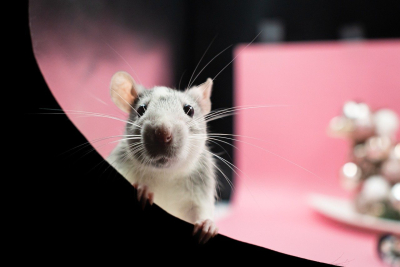The importance of keeping dogs mentally and physically stimulated
Dogs need regular physical exercise and mental stimulation to stay healthy and happy. Lack of engagement can lead to frustration, boredom, and even destructive behaviors. As Dr. Fisher points out, when dogs aren't mentally or physically engaged, it can impact their confidence and overall mood. Just like humans, dogs benefit from activities that give them purpose and a sense of accomplishment.
According to Lee Niel, mimicking outdoor experiences indoors can help maintain your dog's physical condition and alleviate feelings of boredom. This is especially important for dogs that can’t go outside as frequently due to weather or health concerns. Mental stimulation is just as important as physical activity, and both contribute to a dog’s overall well-being.
Basic training exercises: a simple way to engage your dog
A simple yet effective way to stimulate your dog indoors is through basic training exercises. Training not only teaches obedience but also provides mental challenges that keep dogs engaged. Dr. Fisher recommends starting with simple exercises like touch targeting, where the dog is asked to touch their owner’s hand in exchange for a treat. This activity focuses the dog's attention and encourages them to follow directions, making it a fun, rewarding experience.
As your dog becomes more adept at these exercises, you can increase the difficulty by adding commands such as “sit,” “down,” or “stay,” to keep them guessing and engaged. Regular training strengthens the bond between you and your dog and can be done in short, focused sessions throughout the day.
Creative play: using household items as toys
Toys are a great way to keep your dog entertained, but you don't need to rely solely on store-bought products. According to Niel, household items can be turned into engaging toys for your pet. If your dog is not given proper toys to play with, they might find their own “toys” in the form of household objects, which can lead to unwanted behavior.
For instance, an empty box can provide hours of entertainment. Dr. Fisher suggests letting your dog explore the box, whether they want to place their paws inside, stick their nose in, or even tear it apart. This kind of play taps into their natural instincts and keeps them mentally engaged.
Hiding treats in a box or using household items for problem-solving games are other ways to stimulate your dog. Encouraging your pet to take individual toys out of a box and put them back in is another fun and interactive game. By using your creativity, you can come up with countless activities that will engage your dog without having to spend money on new toys.
Tapping into their natural instincts
Dogs have natural instincts that can be used to create enjoyable indoor activities. For example, playing hide-and-seek with treats or favorite toys allows dogs to use their sense of smell and problem-solving skills. This type of game is particularly satisfying for hunting breeds, but all dogs enjoy the challenge of following their noses to find hidden objects.
As Fisher explains, it’s important to consider the specific needs of your dog’s breed, but also their individual preferences. Some dogs may require more mental stimulation than others, so tailoring activities to your pet’s unique personality will provide the most satisfaction.
In addition to hide-and-seek, try tying a towel in a knot, placing treats inside, and letting your dog figure out how to untie it. This simple activity keeps dogs engaged, as they use both their brains and their mouths to work through the puzzle.
Maintaining social interaction
Social interaction is essential for dogs, especially when they spend a lot of time indoors. Lee Niel emphasizes the importance of social contact, noting that dogs are naturally family-oriented animals. Providing opportunities for your dog to interact with other dogs or new people is crucial for their emotional health.
Options for indoor socialization include doggy daycare or training classes, which allow dogs to interact with other pets in a controlled environment. For younger dogs, puppy classes offer valuable socialization during a critical stage in their development. These classes are not only about obedience but also about learning how to interact with other dogs and people in a positive way.
Adapting activities for senior dogs and dogs with limited mobility
When planning activities for senior dogs or dogs with mobility issues, it’s important to consider their physical limitations. Niel recommends using puzzle feeders to hide treats, which keeps older dogs mentally engaged without requiring too much physical exertion. Dr. Fisher adds that allowing these dogs to tear up a paper bag or a box for just a few minutes can provide therapeutic relief and stimulate their mental energy.
For dogs with conditions like arthritis, low-impact activities like walking across the living room to retrieve a toy can be beneficial. Gentle movement helps improve joint flexibility and reduces pain. Fisher encourages pet owners to consult their veterinarians to determine which activities are appropriate for their dog’s specific needs.
Signs of a happy, well-adjusted dog
A dog’s behavior and body language can tell you a lot about their happiness and overall health. According to Dr. Fisher, when dogs don’t receive enough mental or physical stimulation, they can develop a condition called learned helplessness. This occurs when they stop expecting positive experiences and lose interest in normal activities that would usually bring them joy.
Lee Niel advises that a dog showing signs of lethargy or a lack of engagement should be evaluated by a vet to rule out any medical issues. Once health concerns are addressed, trying different indoor activities can help reignite your dog’s interest in their environment.
Happy and well-adjusted dogs typically have regular sleep patterns, engage with family members, and do not display destructive behaviors. Physical signs of contentment include bright eyes, relaxed lips, and forward-pointing ears. A happy dog may also softly pant with their mouth open and lean slightly forward in a relaxed body posture.
One of the clearest signs of joy in a dog is a wagging tail. If your dog regularly brings you a toy to initiate play, this indicates they feel comfortable asking for attention and have confidence that you’ll respond positively.
Keeping your dog mentally and physically stimulated indoors is crucial for their health and happiness, especially when outdoor activities are limited. By incorporating basic training exercises, creative play, and social interaction into your daily routine, you can ensure your dog remains engaged and content. Whether your dog is young and energetic or older with mobility issues, these activities can be adapted to suit their needs, ensuring a happier, healthier life for your beloved pet.
source: CBC


 Cats are the most popular pet in Canada. Despite their affectionate nature, they pose a significant threat to wild birds.
Cats are the most popular pet in Canada. Despite their affectionate nature, they pose a significant threat to wild birds. A powerful cold snap has engulfed central and eastern Canada this week, plunging temperatures far below seasonal averages. The extreme
A powerful cold snap has engulfed central and eastern Canada this week, plunging temperatures far below seasonal averages. The extreme Stress is a constant in modern life. From daily challenges to global issues, people are searching for ways to cope
Stress is a constant in modern life. From daily challenges to global issues, people are searching for ways to cope

